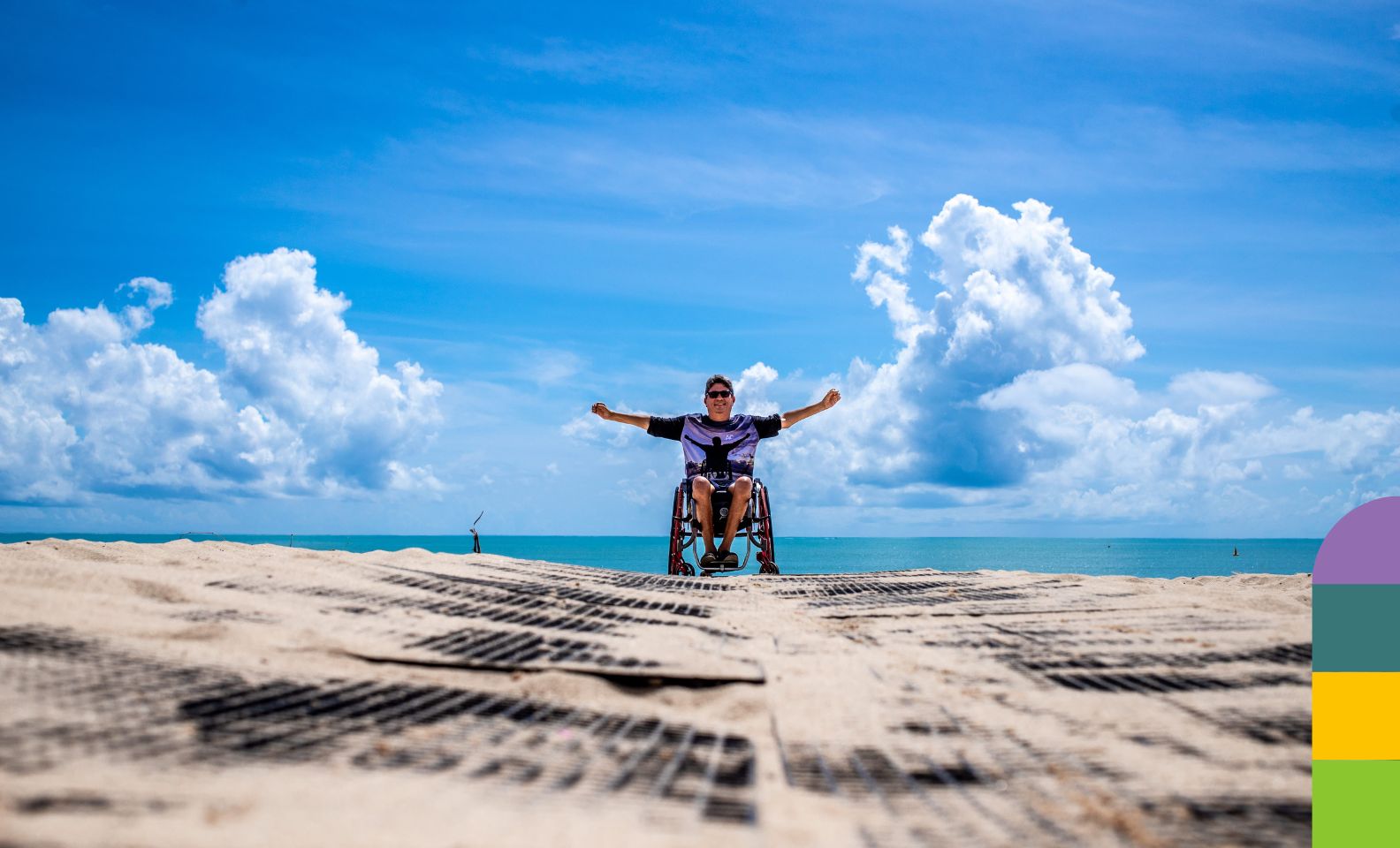The four SDA categories: Improved Liveability
If your NDIS funding includes Specialist Disability Accommodation, it’s important to become acquainted with the four categories of housing design under NDIS SDA so that you can be well informed of the type of housing that is assigned to you and ensure that it meets all of your needs.
The four SDA categories include “Improved Liveability” which is a home design concept that creates a calming and accessible space for residents living with cognitive, intellectual and sensory impairments. It can include adjustable lighting, noise reduction, open-plan living spaces, calming colours and textures, clear signage and uncluttered spaces.
At Maple, we want you to have all of the tools to live a happy and fulfilling life. When you join the Maple family, we will work with you to address all of your unique needs and ensure your living space is as comfortable, calming and accessible as you need it to be.
What is improved liveability SDA?
Improved liveability is one of the four categories of the Specialist Disability Accommodation (SDA) design models. Improved liveability within the National Disability Insurance Scheme (NDIS) is all about creating homes that cater to the unique needs of participants who live with sensory, intellectual, or cognitive disabilities. It’s more than just about physical accessibility; it’s about enhancing the overall living experience to ensure comfort, ease, and well-being.
What is included in SDA Improved Liveability?
Think of a place where every detail is thoughtfully designed to make life easier and more enjoyable. Improved liveability focuses on creating environments that are not only accessible but also deeply considerate of sensory and cognitive needs. Here’s how this design concept can transform living spaces:
Sensory-friendly environments
Imagine stepping into your home where the lighting adjusts to your comfort level, the sounds of the outside world are gently muffled, and colours and textures are chosen to soothe rather than overstimulate. Improved liveability homes often feature:
- Soft adjustable lighting that can be dimmed or brightened to reduce sensory overload or enhance focus.
- Soundproofing materials and designs that minimise external noise, create a peaceful and quiet sanctuary.
- Calming colours and textures are known to reduce anxiety and promote a sense of calm.
Intuitive navigation and layout
Imagine a living space that is easy to navigate, where every element helps you understand and move through your environment effortlessly. These homes might include:
- Clear signage and markers offer visual cues that guide you through the home and make it easy to find your way.
- Open layouts and uncluttered spaces that are straightforward and free of obstacles, reduce the risk of confusion or falls.
- Easy-to-reach, organised and accessible storage solutions that keep everyday items within arms reach, making daily tasks simpler.
What disabilities is improved liveability SDA for?
The improved liveability design category in SDA is specifically designed to support people who live with disabilities that impact their sensory, intellectual, or cognitive functioning.
Sensory Disabilities
Sensory disabilities affect how individuals perceive and process sensory information from the environment. Improved liveability SDA is particularly beneficial for people with:
- Visual impairment – enhanced lighting, contrasting colour schemes and tactile surfaces can help residents navigate spaces safely.
- Hearing impairment – homes can include visual alerts such as flashing lights on doorbells or alarms, and soundproofing to reduce background noise and enhance communication.
- Sensory processing disorders – for those who are hypersensitive to sensory stimuli, we can offer calming environments with controlled lighting, reduced noise and soothing textures.
Intellectual disabilities
People living with intellectual disabilities often face challenges with reasoning, problem-solving, and understanding complex concepts. Improved liveability addresses these needs by creating environments that are easy to navigate.
Homes are designed with clear visual cues, simple layouts, and easy-to-use controls to make daily living tasks more manageable. Features that help simplify routines and provide clear instructions or signage can be beneficial for people living with learning difficulties.
Cognitive disabilities
Cognitive disabilities affect mental functions, including memory, attention, and the ability to process information. Improved liveability SDA caters to residents living with:
- Dementia or Alzheimer’s Disease – these homes are designed to reduce confusion and disorientation, with familiar layouts, visual landmarks, and memory aids integrated into the environment.
- Traumatic brain injuries (TBI) – for those recovering from brain injuries, environments that minimise cognitive load and provide clear, predictable spaces are crucial for daily functioning.
Autism Spectrum Disorder
Residents living with autism often have heightened sensory sensitivities and benefit from environments that reduce sensory overload and provide a structured, predictable setting. Improved liveability homes can provide quiet spaces, low stimulation areas, and sensory-friendly designs to create a calm and orderly living environment.
Psychiatric disabilities
While not always associated with sensory or cognitive impairments, some psychiatric conditions can benefit from some of the design elements of improved liveability SDA.
For example, calming environments with minimal sensory overload and private spaces can help to manage anxiety disorders while safe, controlled spaces that reduce stress triggers and offer security features can be particularly supportive for post-traumatic stress disorder (PTSD).
How does Improved Liveability enhance daily life?
Improved liveability is all about making day-to-day living not just possible, but pleasant and empowering. Imagine being able to move about your home, engage with your surroundings, and complete tasks with minimal stress. Here’s how we can help you achieve that:
Personalised touches
Features that adapt to your needs and preferences, such as:
- Customisable technology – smart home systems that can be tailored to your sensory preferences, whether it’s adjusting the lights or controlling appliances with ease.
- User-friendly fixtures – devices and controls designed for ease of use, ensuring that everyone, regardless of their abilities, can operate them effortlessly.
Enhanced Safety and comfort
Consider how safety and comfort are seamlessly integrated into every aspect of your home:
- Non-slip surfaces – flooring designed to prevent slips and falls, providing stability and confidence as you move around.
- Accessible bathrooms and kitchens – spaces where everything is within easy reach, making it simple to cook, clean and care for yourself.
Creating a haven for wellbeing
Improved liveability isn’t just about meeting basic needs; it’s about creating a nurturing environment that supports mental, emotional, and physical well-being. Imagine a home that feels like a true haven:
- Promoting independence – Living in an improved liveability home means being empowered to do more on your own, fostering a greater sense of independence and self-reliance.
- Reducing anxiety and stress – With environments designed to reduce sensory overload and promote calm, these homes can significantly reduce stress levels and improve overall quality of life.
Why choose Improved Liveability SDA with Maple?
Improved liveability SDA is Maple’s commitment to creating homes that go beyond accessibility, offering thoughtful, sensory-friendly, and intuitively designed spaces. Our Improved liveability homes are about more than just functionality–they’re about transforming your everyday living into an experience that is comfortable, supportive and enriching.
If you live with sensory, intellectual, or cognitive disabilities, our improved liveability home can be a sanctuary that truly feels like home.
Reach out today to find out more about our Improved Liveability housing.




